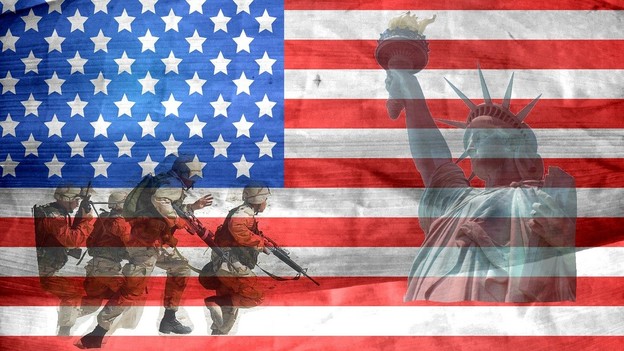|
Dick Storey
Hello Willard,
Does this count? I did say AR-15 type assault rifle.
Dick
Here's an interesting article from the NRA explaining how many AR-15 were used at the beginning of the Vietnam War.
Remembering The Air Force General Who Helped Usher In The M16 Rifle
Gen. Curtis LeMay.
However, military history buffs and firearms enthusiasts can also point to another hallmark in LeMay’s long career: he’s the man responsible for bringing the AR-15 rifle to the U.S. military, which would go on to inspire the M16 rifle and change the face of military arms forever.
The AR-15, designed by engineer Eugene Stoner of ArmaLite, a division of California-based Fairchild Engine and Airplane Corporation, was a scaled-down version of Stoner’s initial AR-10, which used the larger 7.62x51 NATO (.308) cartridge. In the late 1950s, Stoner and ArmaLite executive George Sullivan submitted the .22-caliber AR-15 for rifle trials by the U.S. Army Infantry Board after impressing Army Gen. William Wyman.
Though the U.S. military had just adopted the M14 rifle as a replacement to the aging M1 Garands, Wyman’s curiosity was piqued, and he ordered 10 AR-15s and 100,000 rounds of ammo for testing in 1958. Despite mostly positive tests at Fort Benning, where the AR-15 proved to be almost three times as reliable as the M14 during development, Dr. Frederick Carten, an Army Ordnance Corps expert who was opposed to just about everything the AR-15 represented, failed to give the AR-15 a flattering review in his report, and the Ordnance Corps turned away from the innovative rifle. In February 1959, arms maker Colt bought the rights to the AR-15 and AR-10 from ArmaLite for $75,000 plus royalties on future production.
Enter General LeMay. As the famous story goes, the general was attending a Fourth of July celebration in 1960, and was approached by a salesman from Colt, looking to reintroduce the AR-15 as a viable service rifle. The salesman placed two watermelons on a shooting range – one at 50 and one 150 yards (LeMay colorfully opted to eat a third watermelon) – and handed an AR-15 and loaded magazines to LeMay. The general shot the rifle, and was instantly sold – he placed an order for 80,000 AR-15 rifles on the spot for the U.S. Air Force.
However, Congress stepped in and put the order on hold, citing the Army Ordnance Board’s denial of a re-trial of the improved AR-15 by new owner Colt. When a request came in to the Pentagon from Lackland Air Force Base to replace the old M2 carbines with AR-15s, Congress investigated the Ordnance Corps’ refusal to re-evaluate the rifle.
As a result, the Ordnance Corps agree to a new series of tests, completed in November of 1960. After firing nearly 25,000 rounds through three AR-15s, the results were favorable, performing well even in dust, extreme cold, rain and without lubrication. One rifle even produced a 10-round, 1.5-inch group at 100 yards, well within the six-inch requirement. The AR-15 outperformed the M14, and was approved for Air Force trials.
Even then, General LeMay had to apply three times before getting approval to order the rifles for the Air Force. His first attempt, an order of 8,500 rifles initially approved by the Deputy Defense Secretary, was shot down by Congress. The headstrong general took his case directly to President John F. Kennedy, who also failed to approve the order. It wasn’t until May 1962 that LeMay’s order was approved, and with tensions escalating in Southeast Asia, the military found the opportunity to put the new rifle to the test.
AR-15s were used in Vietnam, a move outside the normal procurement process. Reviews from users were favorable, with many preferring the AR-15 to all other service firearms. Secretary of Defense Robert McNamara signed off on a purchase of 1,000 AR-15s in December 1961, and the rifle continued testing among South Vietnamese personnel during Project AGILE. The results were similarly enthusiastic.
However, the Ordnance Corps wasn’t done battling the adoption of the AR-15, reportedly rigging the Arctic tests of the AR-15 to ensure it failed. When Eugene Stoner got word of the dramatic failures of his creations, he flew to Fort Greeley, Alaska to investigate, and found the rifle seemingly deliberately tampered with to result in failure. After repairing each rifle, the tests resumed, and the rifles performed as designed.
Despite the attempted sabotage of the Arctic tests, General LeMay’s investment in the AR-15 was about to pay off. Secretary McNamara was also a fan of the AR-15 and identified the Ordnance Corps reluctance to perform fair tests and recommend adoption. In response, he stopped all new procurements of the M14 rifle and the following year, ordered the Corps to work with every branch of the military to adopt the AR-15 rifle as the standard service rifle of the entire U.S. military. The M16 was born. ...................(there is more)
What's The Difference Between An AR-15 & An M16?
The massacre at the Orlando nightclub Pulse has recharged the national spotlight on a semiautomatic weapon known as an AR-15, a gun very similar to the one used by the killer. The AR-15 was used in the Sandy Hook massacre, the Aurora theater massacre, and the San Bernardino massacre. What's the difference between the AR-15 and the M16, a military weapon? The AR-15 is basically the civilian counterpart to the M16.
Source: https://www.bustle.com/articles/167436-whats-the-difference-between-an-ar-15-an-m16-theyre-frighteningly-similar
The AK-47 and the M16 are two of the most widely used assault rifles in the world. Both gained popularity and fame for being the standard issue assault rifles used respectively by the Soviet and U.S. militaries during the Cold War. Their ubiquitous deployment today by military, police, security forces, revolutionaries, terrorists, criminals, and civilians alike make them the frequent subject of comparison. Source: https://www.diffen.com/difference/AK-47_vs_M16_Rifle
Is an AR-15 the same as an M16?

The AR-15 is basically the civilian counterpart to the M16. The AR-15 came first, in 1947; the M16 a decade later. They have the same magazine capacity: 30 rounds. The former is heavier, with a shorter range and slower rate of fire, but these are subtle differences.Jun 16, 2016
|





















